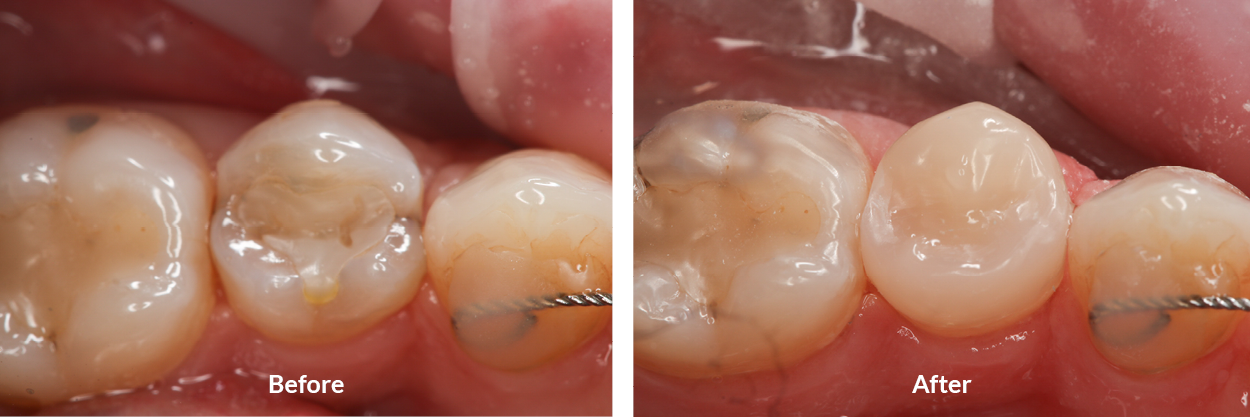The patient presented with cracked tooth syndrome on a lower premolar. The One Visit Crown (OVC) was chosen based on its competitive price and good aesthetics.
This case study depicts a slightly different technique used by Dr Terry Wong, whereby the uncured material on the buccal side is shaped with OptraSculpt Pads (Ivoclar Vivadent) prior to curing. Dr Wong prefers to do as much of the shaping as possible prior to the final cure to reduce the time needed for finishing and polishing afterwards.
The images relate to the following steps:
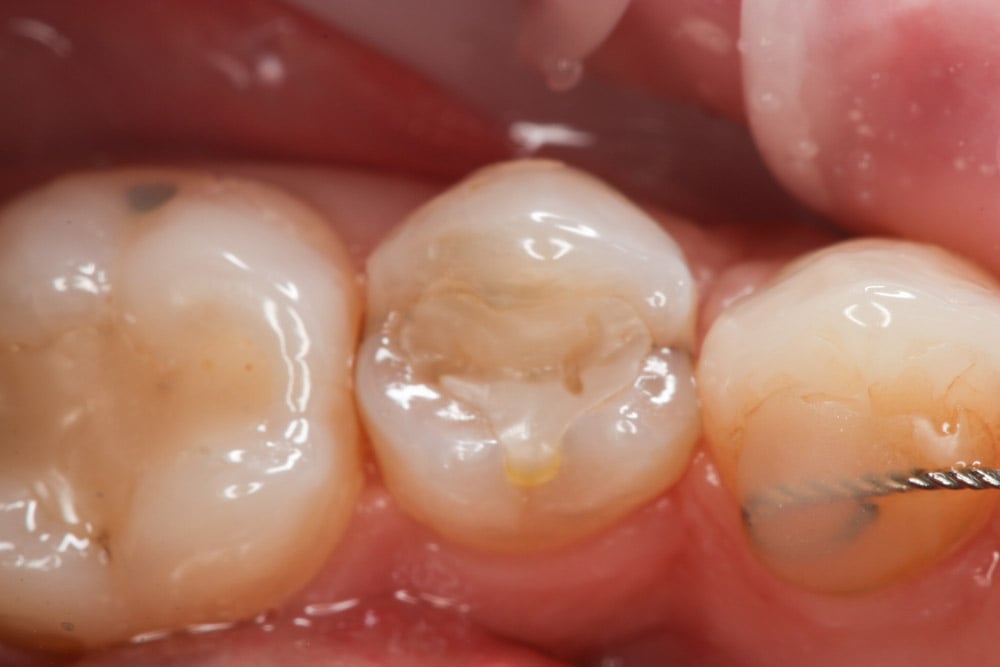 |
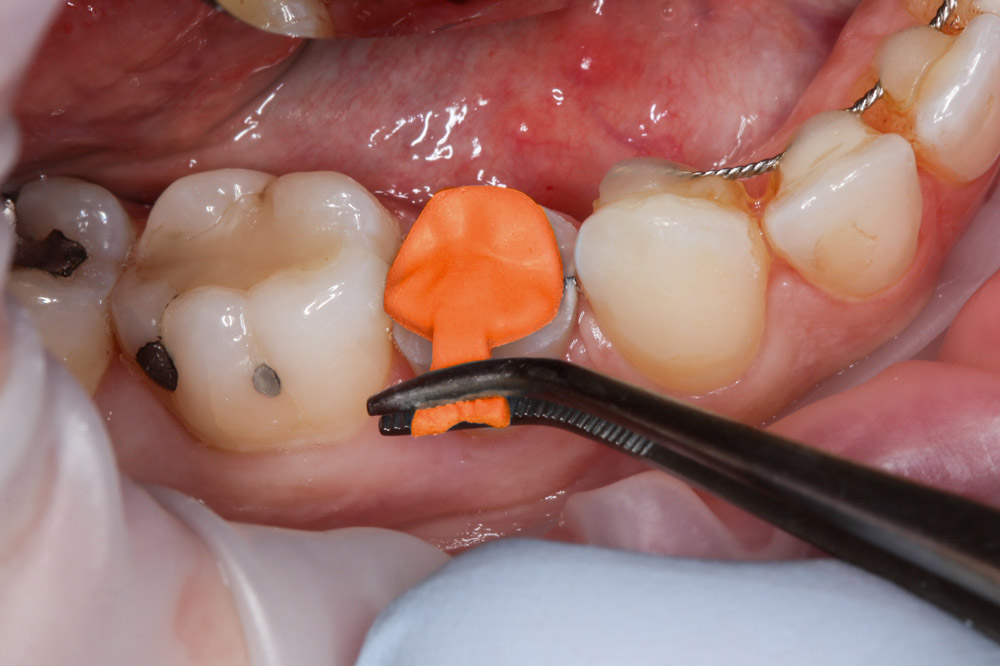 |
 |
|
01 Pre-operative – cracked tooth syndrome. |
02 The replica was positioned over the prep to check there was sufficient occlusal distance. |
03 When the patient bites down there should be enough room that the replica is not obstructed from moving. |
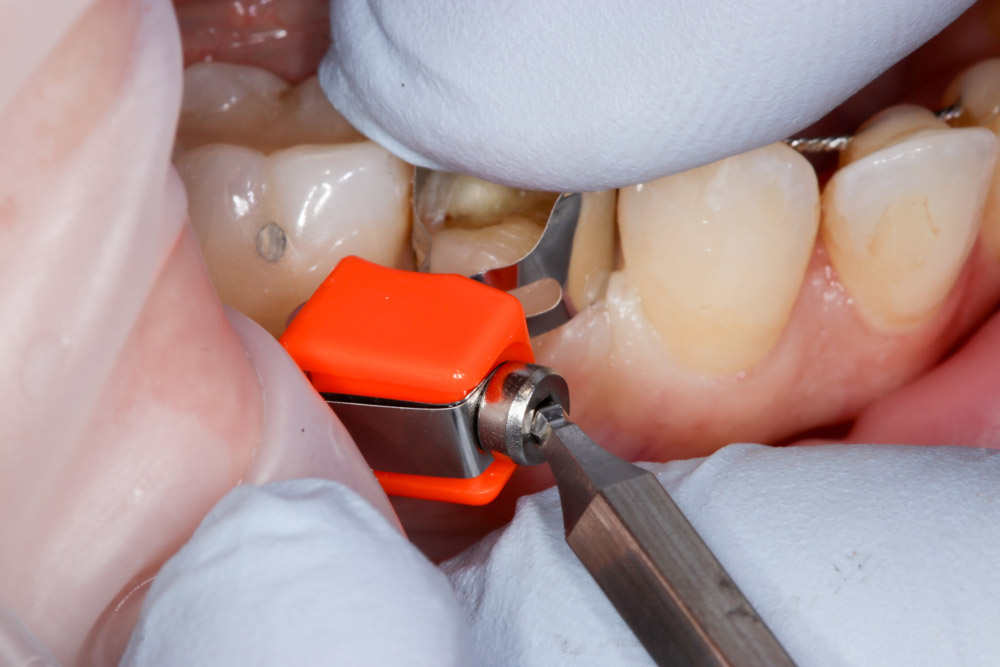 |
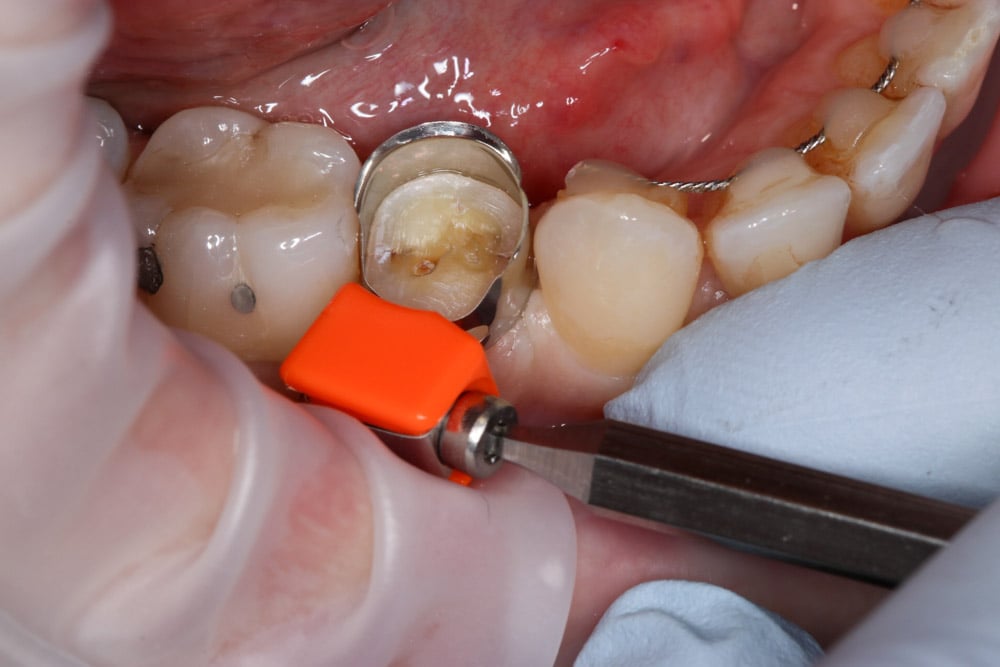 |
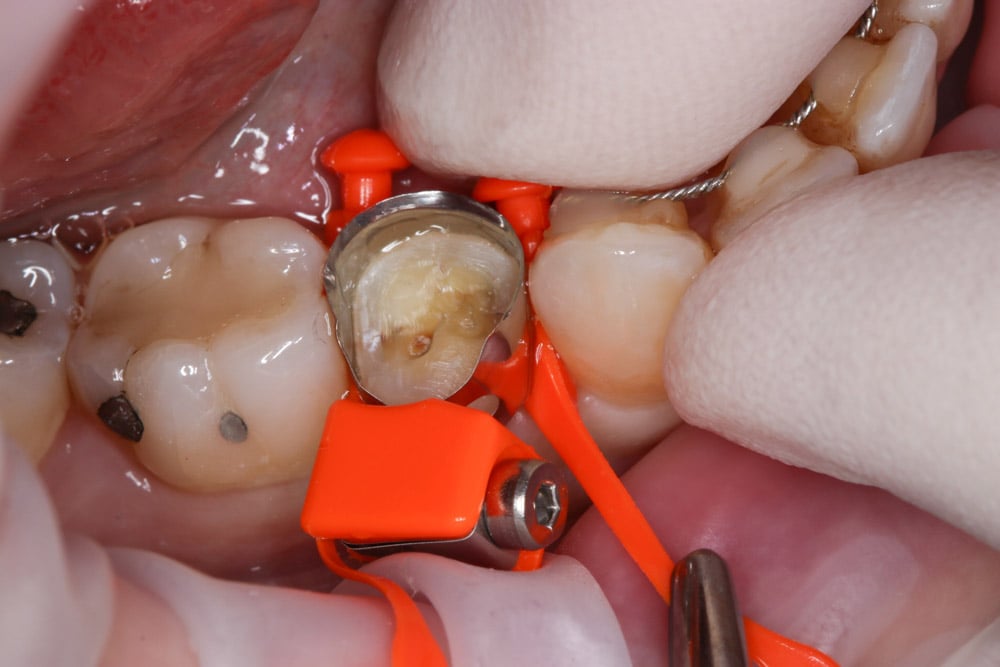 |
| 04 A finger was used to secure the McDonald Matrix Band during placement over the prepped tooth. | 05 The McDonald Matrix Band was tightened with the Hex Stick. | 06 The Stretch Wedges were placed and pulled tight. They were also pushed in further from the lingual side. Wooden wedges can also be used. |
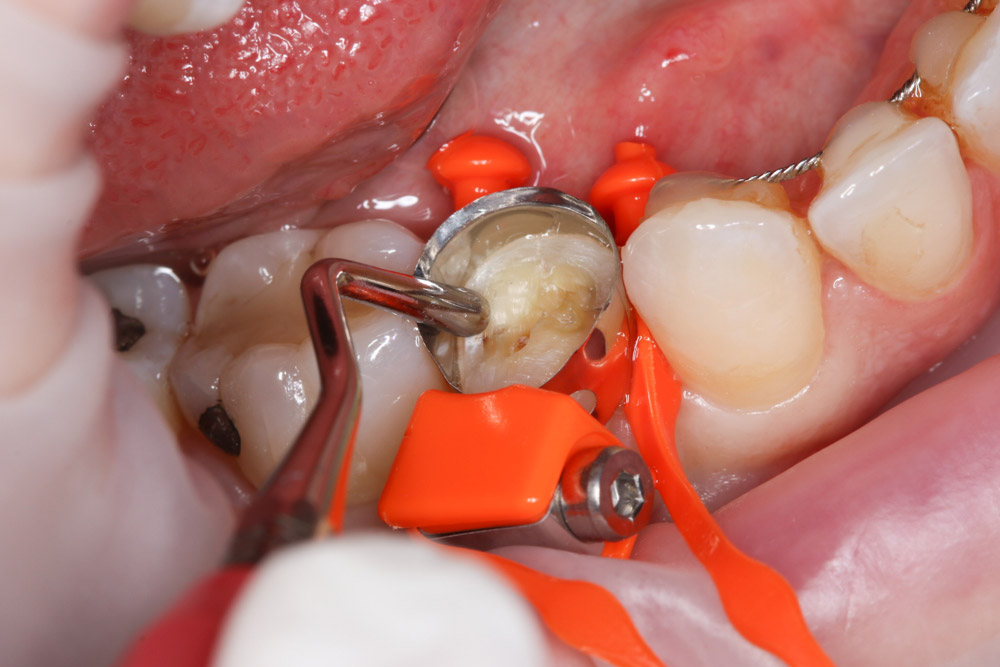 |
 |
 |
| 07 The contact points were burnished. | 08 Etch. | 09 Bond. |
 |
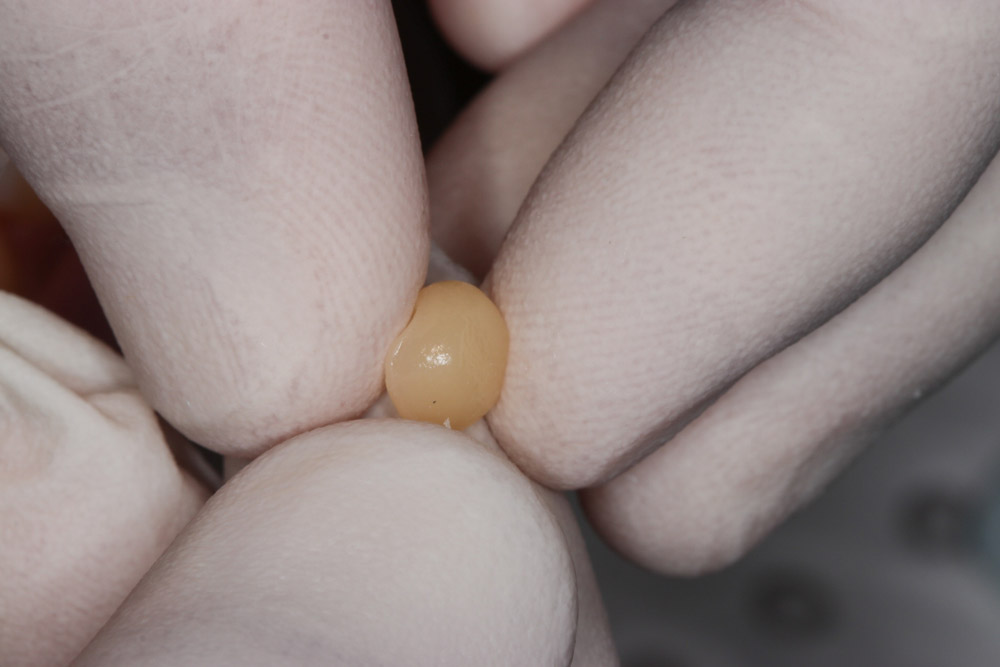 |
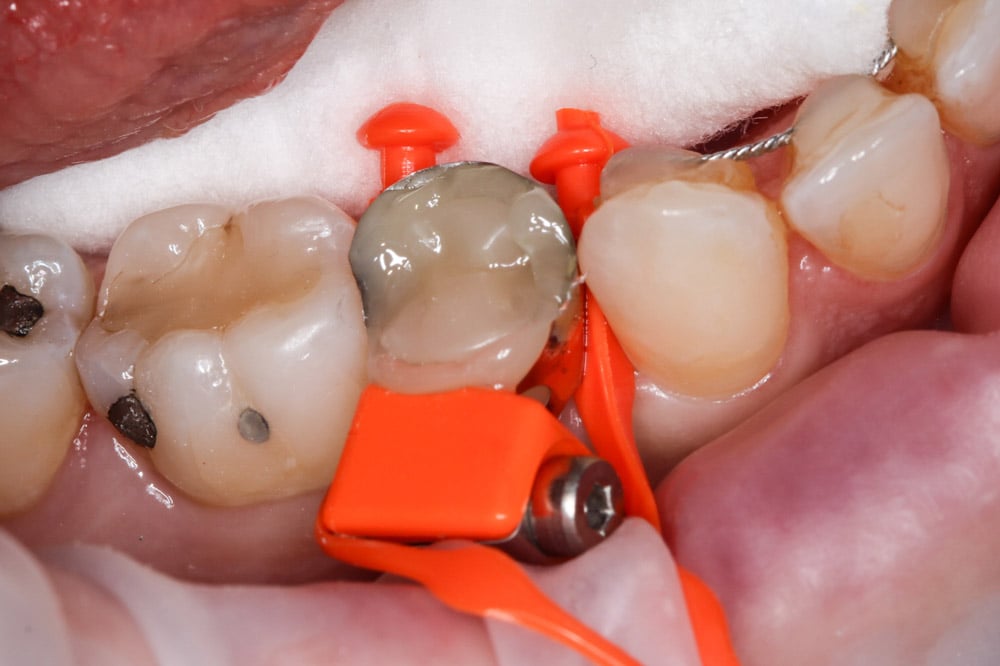 |
| 10 Flowable added. | 11 Excess material was pressed into a dome shape between the fingers. | 12 The OVC was pressed into the McDonald Matrix Band and aligned with the fissures on the adjacent teeth. |
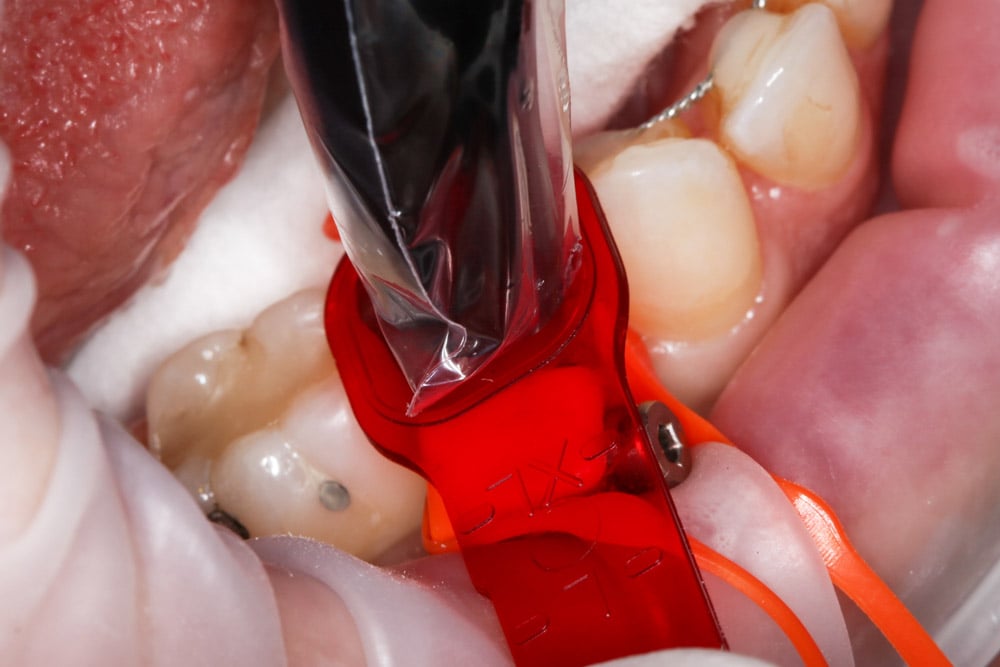 |
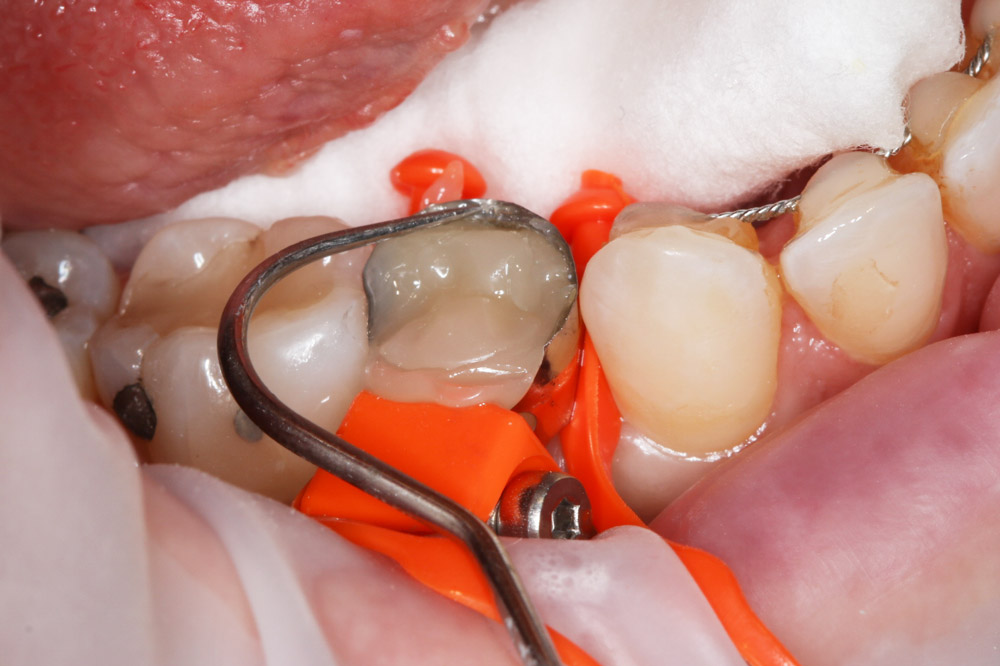 |
 |
| 13 The Spot Curing Tool was used to spot cure from the top (3 seconds) to secure the positioning of the OVC. | 14 Excess material was removed from the lingual aspect. | 15 The lingual aspect was light cured. |
 |
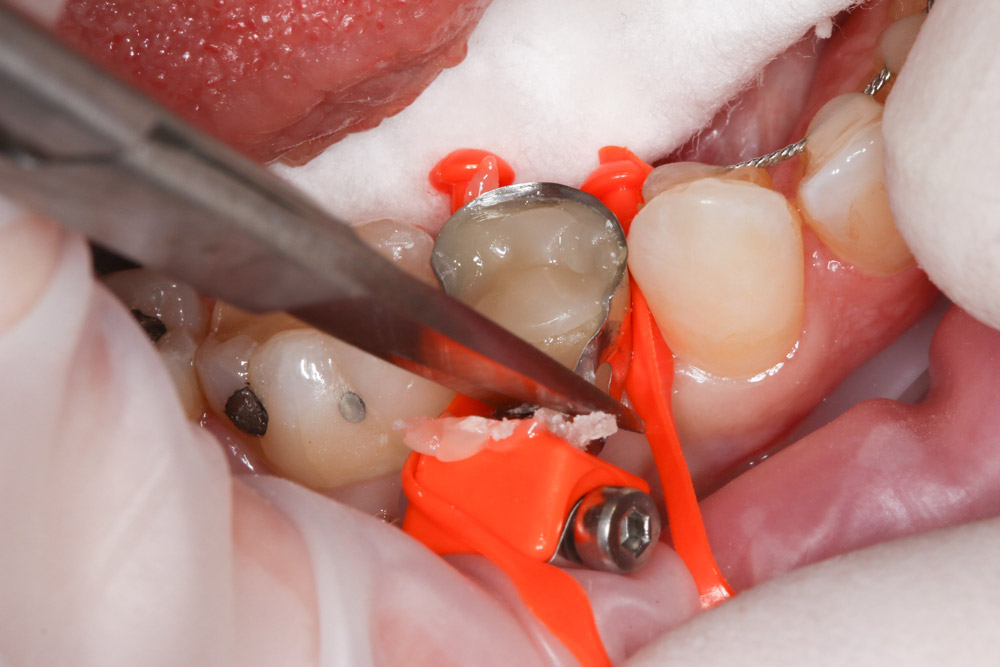 |
 |
| 16 The McDonald Matrix Band was loosened. | 17 Then the buccal side of the band was removed to provide access. | 18 OptraSculpt Pads (Ivoclar Vivadent) were used to sculpt the uncured OVC material on the buccal side prior to curing. |
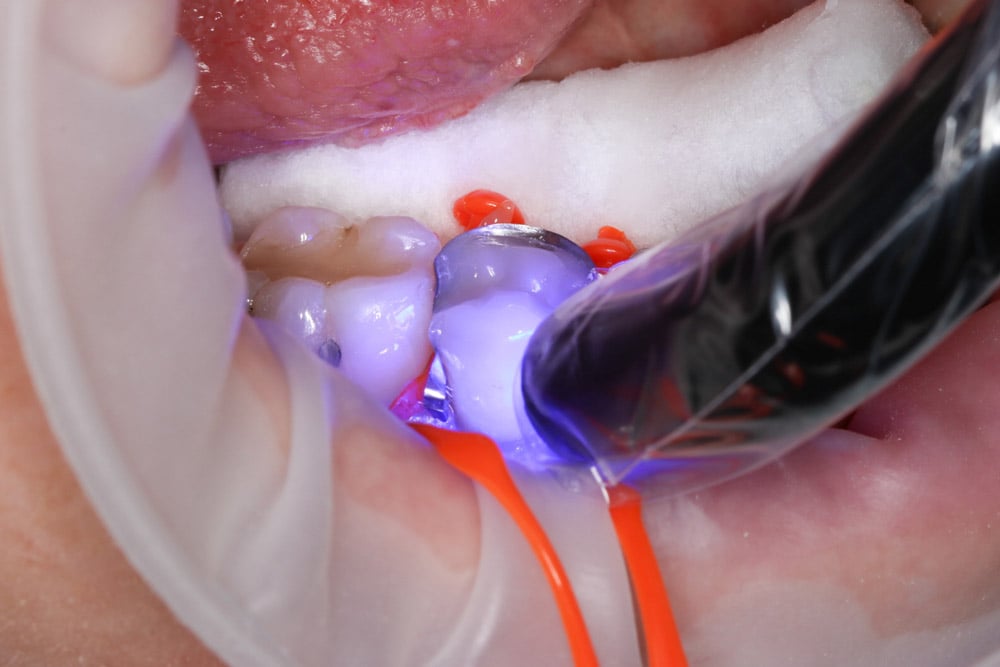 |
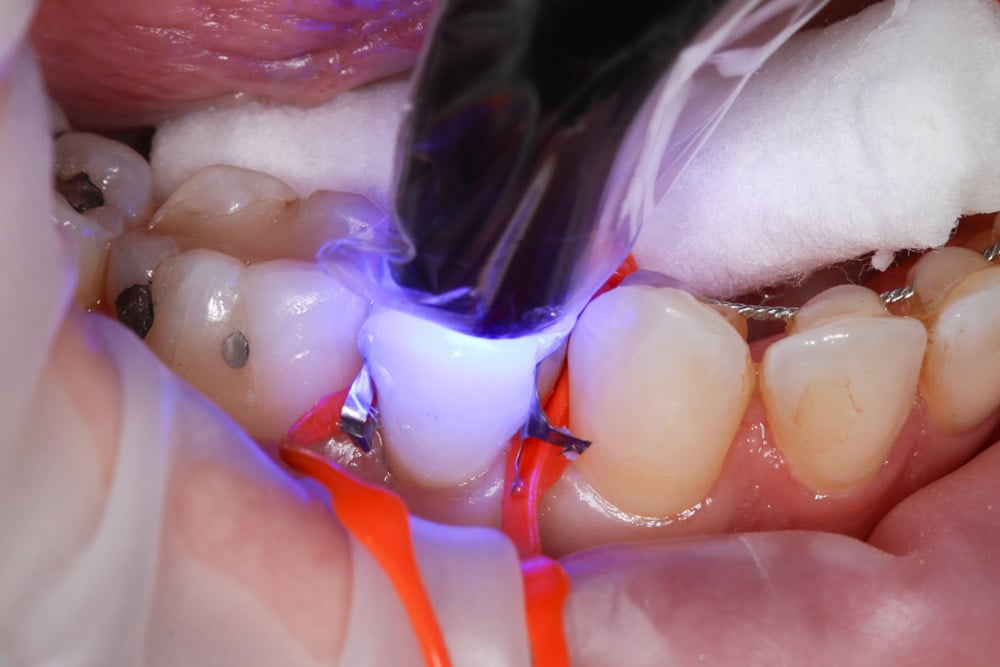 |
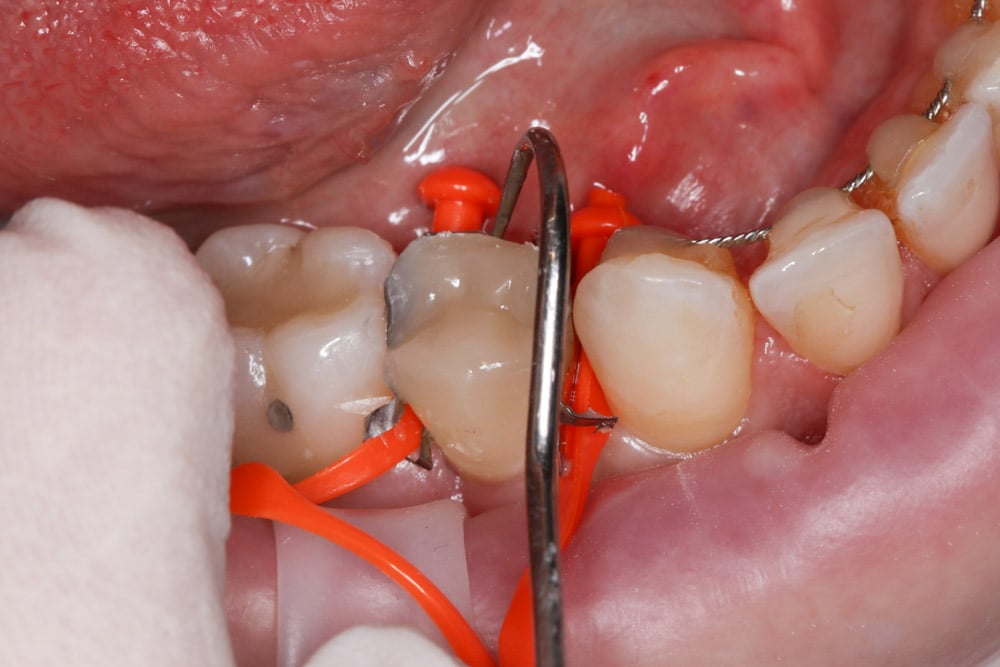 |
| 19 The OVC was cured from buccal aspect. | 20 Then cured from the top. | 21 The rest of the band was removed. |
 |
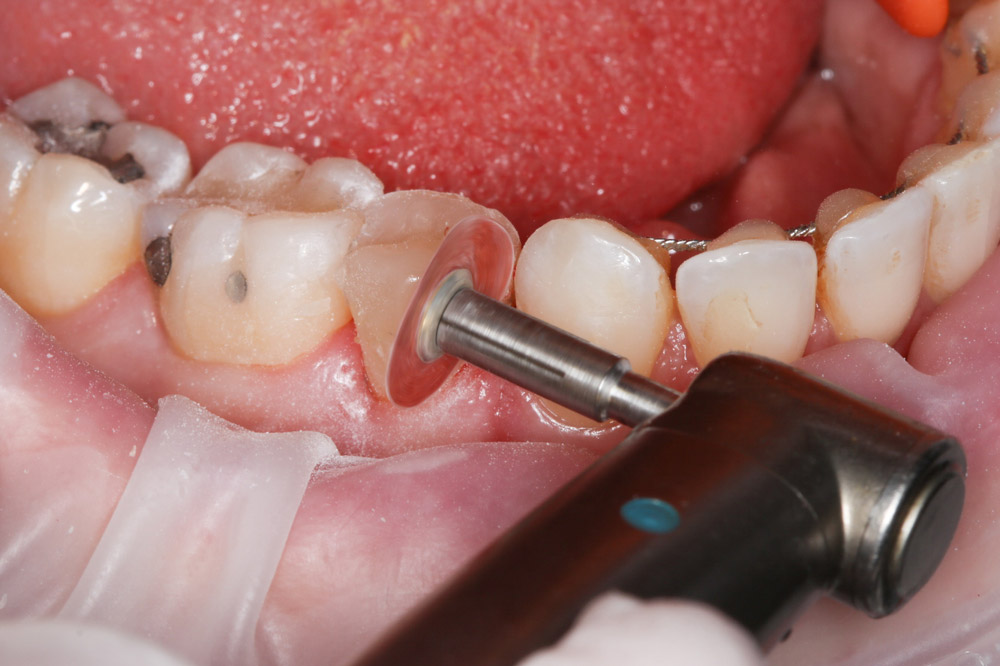 |
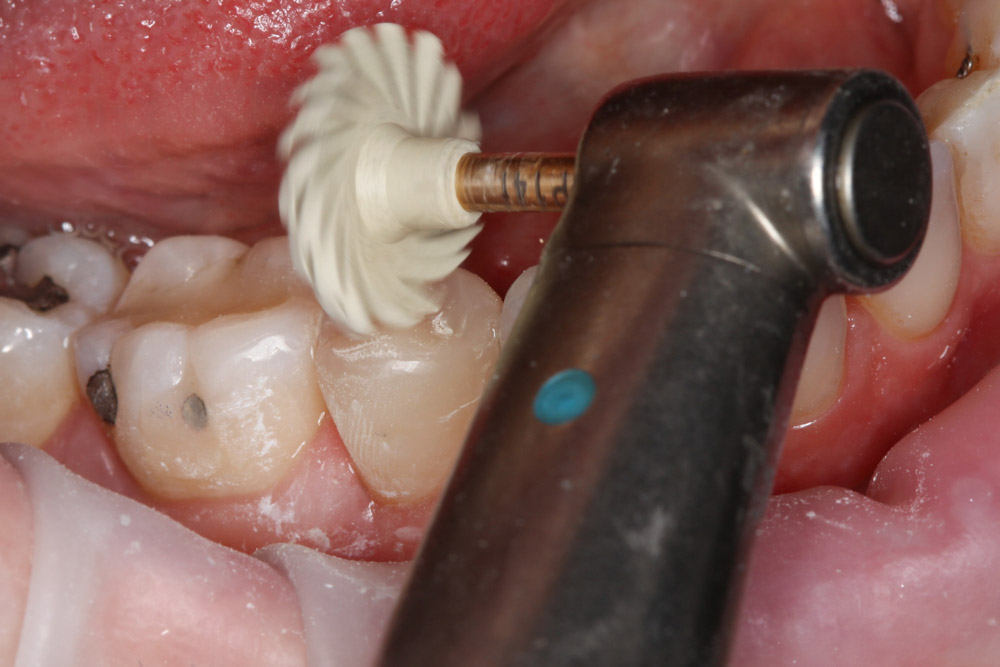 |
| 22 Followed by the Stretch Wedges which were cut with scissors and then pulled through from the lingual side. | 23 Finishing and polishing was completed using a full range of discs from coarse, medium to fine. Dr Wong used Soflex XT series (3M ESPE). | 24 To get the final polish, Dr Wong used EVE Diacomp Plus Twist in beige for high luster. |
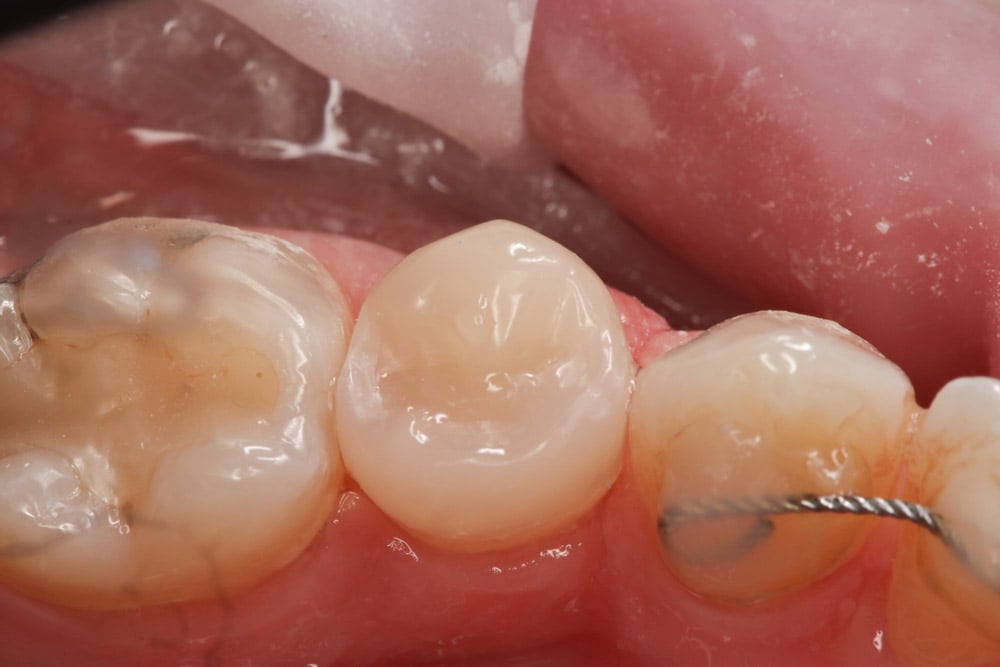 |
 |
|
| 25 Shot of the final restoration. | 26 Another shot of the final OVC from the buccal aspect. |
What do you think of Dr Terry Wong’s technique? Leave your comments below.

